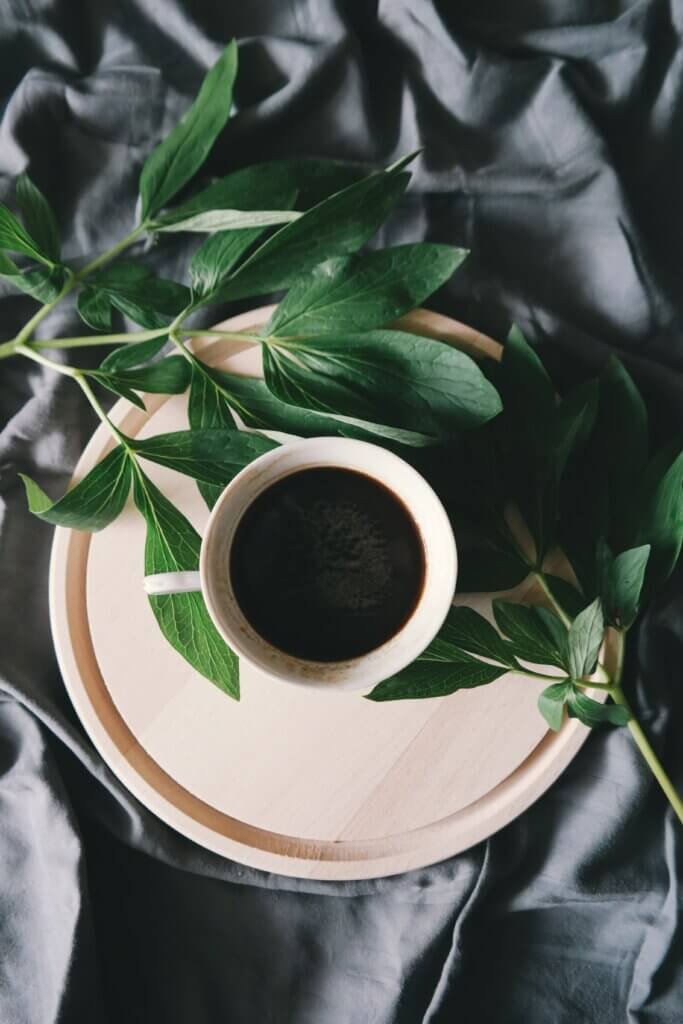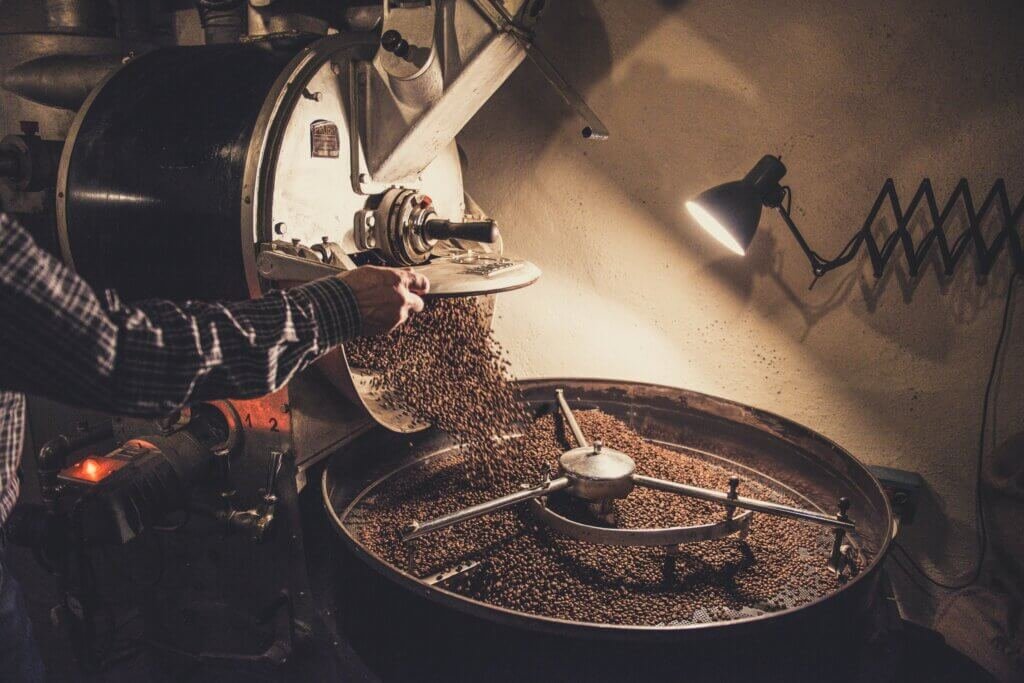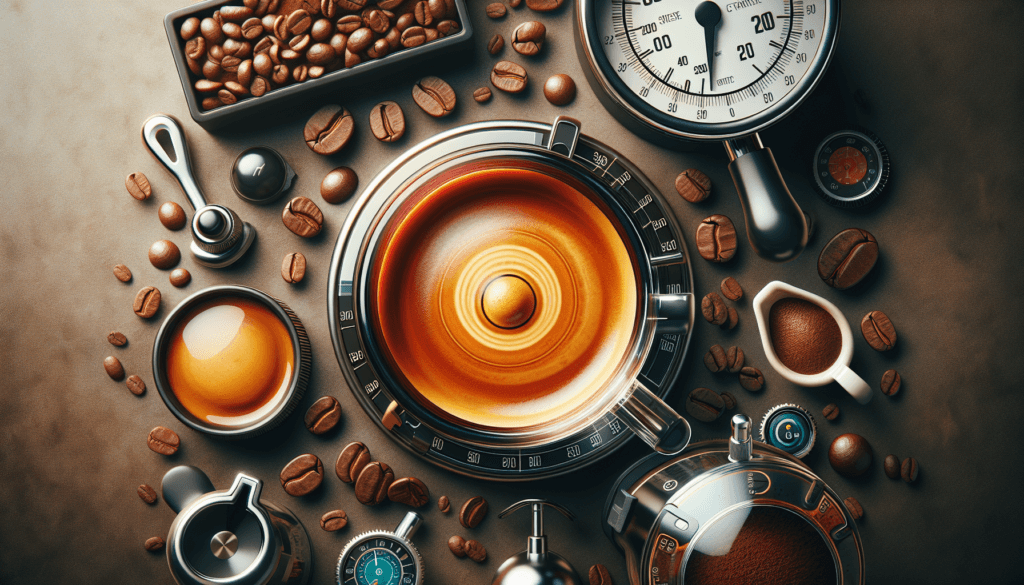You love the aroma and rich flavor of a perfectly brewed espresso shot, but have you ever wondered how baristas manage to consistently create that perfect cup? In this article, you will uncover some of the best-kept secrets of professional baristas, from the grind size to the water temperature, that can help you perfect your espresso shot at home. Whether you’re a coffee enthusiast or aspiring barista, these insider tips and techniques will take your espresso game to the next level. So grab your favorite coffee beans and get ready to unlock the secrets behind the perfect espresso shot.

Choosing the Right Coffee Beans
Understanding the importance of fresh beans
When it comes to making the perfect espresso shot, the freshness of your coffee beans plays a crucial role. Freshly roasted beans preserve the flavor and aroma that make for a delicious cup of coffee. As coffee beans age, they gradually lose their freshness and develop a stale taste. To ensure you have the best quality coffee, it’s important to purchase beans that have been recently roasted.
Selecting the right roast level
Coffee beans come in various roast levels, ranging from light to dark. Each roast level imparts different flavors and characteristics to the coffee. Lighter roasts tend to have more acidity and a brighter taste, while darker roasts result in a richer, bolder flavor profile. It’s essential to choose a roast level that aligns with your personal taste preferences. Experiment with different roasts and find the one that suits you best.
Exploring different bean origins
Coffee beans are grown in different regions around the world, each with its own unique flavor profile. From fruity and floral Ethiopian beans to chocolaty and nutty Brazilian beans, the origin of the coffee beans greatly impacts the taste of your espresso. Exploring different bean origins allows you to discover new flavors and expand your coffee palate. Consider trying beans from various countries to find your favorite flavor profiles.
Grinding the Coffee
Why grinding is crucial
Grinding your coffee beans just before brewing is crucial for achieving the best espresso shot. When coffee is exposed to air, it begins to oxidize, resulting in a loss of flavor. By grinding your beans right before brewing, you preserve the freshness and enhance the extraction process. This ensures that you extract the full range of flavors and aromatic compounds from the beans, leading to a more flavorful and enjoyable cup of espresso.
Choosing the right grind size
The grind size of your coffee beans plays a major role in the extraction process. Different brewing methods require different grind sizes, and for espresso, a fine grind is essential. The small particles of a fine grind allow for optimal surface area contact with water, resulting in a full-bodied and flavorful shot. Invest in a high-quality burr grinder that allows you to adjust the grind size accurately, ensuring consistency and enhancing your coffee’s taste.
Using a burr grinder
When it comes to grinding coffee for espresso, a burr grinder is the preferred choice. Unlike blade grinders, which chop the beans inconsistently, burr grinders crush the beans between two burrs, resulting in a more uniform grind size. This consistent grind size ensures even extraction and helps in achieving a balanced and delicious espresso shot. Investing in a burr grinder will significantly enhance the quality of your espresso.
Dosing and Tamping
Understanding the importance of dosing
Dosing refers to the amount of coffee grounds used in each espresso shot. Consistency in dosing is crucial for achieving a consistently excellent shot every time. Using a scale to measure the precise amount of coffee grounds ensures accuracy and consistency. Dosing too little can result in a weak and under-extracted shot, while dosing too much may lead to over-extraction and bitterness. Finding the right dose for your espresso machine is essential for the perfect shot.
Measuring the right amount of coffee
To achieve the right dose, it’s important to measure the correct amount of coffee grounds. A general guideline is a coffee-to-water ratio of 1:2, but you can adjust this to suit your taste preferences. Experimentation may be required to find the perfect balance of flavor and strength. Using a scale to measure your coffee ensures you have precise and consistent results.
Mastering the art of tamping
Tamping is the process of compressing the coffee grounds evenly in the portafilter. This step is important to maintain a consistent and even flow of water through the grounds during the extraction process. Using a tamper, apply firm and even pressure to the coffee grounds to create a level and compact puck. Proper tamping ensures that water flows evenly through the coffee grounds, resulting in a balanced extraction and a delicious espresso shot.
Water Temperature and Quality
Why water temperature matters
The temperature of the water used for brewing greatly affects the flavor extraction of coffee. Water that is too hot can lead to over-extraction and a bitter taste, while water that is too cold can result in under-extraction and a weak, flavorless shot. Achieving the ideal water temperature is crucial for obtaining the optimal balance of flavors and aromas in your espresso.
Determining the ideal water temperature
The ideal water temperature for brewing espresso is typically between 195°F and 205°F (90°C to 96°C). This range allows for proper extraction without scorching or under-extracting the coffee. Investing in an espresso machine with a reliable temperature control system ensures that the water is heated within the desired range consistently. It’s also important to note that water temperature can be affected by factors such as altitude, so adjustments may be necessary.
Using purified or filtered water
The quality of the water used for brewing is equally important as the temperature. Tap water often contains minerals and impurities that can affect the taste of your espresso. Using purified or filtered water helps eliminate these impurities, resulting in a cleaner and more flavorful cup of coffee. It’s recommended to avoid using distilled water, as it lacks the minerals necessary for extracting the full flavors from the coffee beans.

The Espresso Machine
Understanding the different types of machines
To perfect your espresso shot, it’s important to understand the different types of espresso machines available. Semi-automatic machines allow you to control various aspects of the brewing process, such as water temperature, pressure, and shot duration. Automatic machines simplify the process by automating these variables, ensuring consistency. Lever machines offer a more hands-on approach, allowing you to manually control pressure and extraction time. Each type has its own advantages, so choosing the right machine depends on your preferences and level of involvement in the brewing process.
Proper machine maintenance
To ensure your espresso machine performs at its best, regular maintenance is essential. This includes cleaning the group head, portafilter, and steam wand regularly to remove any built-up residue. Descaling the machine periodically helps remove mineral deposits that may affect its performance. Following the manufacturer’s guidelines for maintenance and cleaning schedules is important in prolonging the lifespan of your espresso machine and maintaining the desired quality of your espresso shots.
Optimizing pressure and extraction time
Achieving the perfect espresso shot requires finding the right balance of pressure and extraction time. The optimal pressure range for extraction is typically between 9 and 10 bars, but it can vary depending on the coffee and personal preferences. Extraction time refers to how long water is in contact with the coffee grounds. Too short of an extraction time can result in under-extraction, while too long can lead to over-extraction. Experimentation is key to finding the ideal pressure and extraction time that produces a well-balanced and flavorful shot.
Shot Timing and Yield
Understanding shot timing
Shot timing refers to the length of time it takes for an espresso shot to be extracted. The ideal shot timing depends on factors such as the grind size, dose, and desired flavor profile. Generally, a shot should be extracted within 25 to 30 seconds. This timeframe allows for optimal extraction of flavors and aromas, resulting in a well-balanced shot. Monitoring shot timing helps ensure consistency in the brewing process.
Achieving the desired shot yield
Shot yield refers to the amount of liquid coffee extracted from the coffee grounds. The desired shot yield varies depending on personal taste preferences and the coffee-to-water ratio. A typical shot yield ranges between 25 to 35 grams. Adjusting the dose, grind size, and shot time can help you achieve the desired shot yield. Experimentation and tasting will guide you in finding the perfect balance.
Adjusting variables for different extraction times
Different coffee beans and roast levels may require adjustments to achieve the desired extraction time. Fine-tuning variables such as the dose, grind size, and shot time allows you to adapt to different beans and create customized shots that bring out the unique flavors and characteristics of each coffee. Taking note of the results and making adjustments accordingly will help you achieve consistent and exceptional espresso shots.

Pre-Infusion Techniques
Exploring the benefits of pre-infusion
Pre-infusion is a technique that involves saturating the coffee grounds with a small amount of water before the full extraction begins. This step allows the coffee to bloom, releasing trapped gases and ensuring an even extraction. Pre-infusion can result in a more balanced and flavorful shot, with reduced bitterness and enhanced sweetness.
Methods for achieving pre-infusion
There are different methods to achieve pre-infusion, depending on your espresso machine. Some machines have built-in pre-infusion features that automatically release a small amount of water before the full extraction. For machines without this feature, you can manually achieve pre-infusion by starting the extraction and then pausing briefly before resuming. This allows the coffee grounds to saturate and bloom before the full extraction process begins.
Timing and pressure considerations
Timing and pressure are crucial factors to consider during pre-infusion. The duration of pre-infusion depends on personal preference and the desired flavor profile. Typically, pre-infusion lasts between 5 to 10 seconds. Pressure during pre-infusion should be lower than during full extraction, usually around 2 to 3 bars. Adjusting the timing and pressure will help you tailor the pre-infusion process to achieve the specific flavors and characteristics you desire in your espresso.
Milk Steaming and Latte Art
Essential milk steaming techniques
For those who enjoy milk-based espresso drinks, mastering milk steaming techniques is essential. It involves creating the perfect microfoam, a velvety and creamy texture that enhances the taste and appearance of your espresso beverages. Start by using cold milk and submerging the steam wand just below the surface. Position the steam wand at an angle to create a whirlpool effect and promote even heating. As the milk expands, gradually lower the steam wand to maintain the desired texture and temperature.
Creating the perfect microfoam
Microfoam refers to milk that is smoothly textured with tiny bubbles evenly distributed throughout. To achieve microfoam, it’s important to achieve the right steaming technique. Positioning the steam wand correctly, using a suitable pitcher, and practicing proper steaming technique all contribute to creating the perfect microfoam. With practice and patience, you’ll be able to achieve the ideal texture to enhance your espresso-based drinks.
Mastering latte art techniques
Latte art is the art of creating visually appealing designs on the surface of milk-based espresso drinks. Pouring and manipulating the milk correctly are fundamental to achieving beautiful latte art. Start with the basics, such as pouring a heart or a simple tulip. As you gain confidence and skill, you can progress to more intricate designs like rosettas and swans. Mastering latte art adds a touch of creativity and elegance to your espresso experience.

Cleaning and Maintenance
Importance of regular machine cleaning
Regular cleaning and maintenance of your espresso machine and equipment are crucial for the longevity and performance of your setup. Coffee residue and oils can build up over time, affecting the taste of your espresso and potentially damaging the machine. Cleaning removes these deposits and ensures that your equipment functions optimally. Follow the manufacturer’s cleaning instructions, and establish a regular cleaning routine to keep your machine in top shape.
Cleaning the grinder and other equipment
Apart from the espresso machine, the grinder and other equipment also require regular cleaning. Coffee oils can build up in the grinder, affecting the consistency of the grind. Cleaning the grinder burrs regularly helps maintain the quality of your coffee grounds. Additionally, cleaning the portafilter, steam wand, and other accessories ensures that no residue or impurities come into contact with your coffee. Take the time to clean and maintain all equipment for the best coffee experience.
Preventing clogs and espresso buildup
Over time, mineral deposits can accumulate in the various parts of your espresso machine, potentially causing clogs and affecting performance. Descaling the machine periodically is important to remove these deposits and prevent any blockages. Preventive maintenance can also involve regular backflushing and cleaning of the group head to remove any trapped coffee grounds and residues. By taking these proactive steps, you can avoid potential issues and ensure a smooth brewing process.
Troubleshooting Common Issues
Identifying and fixing espresso extraction issues
Sometimes, espresso extraction issues can arise, affecting the taste and quality of your shot. If your espresso is tasting sour, it may indicate under-extraction, and adjusting the grind size or increasing the extraction time can help. On the other hand, a bitter taste can indicate over-extraction, and adjusting the grind size or reducing the extraction time may resolve the issue. By understanding the signs of under-extraction and over-extraction, you can troubleshoot and adjust variables to achieve a well-balanced shot.
Dealing with inconsistent shots
Inconsistency in your espresso shots can be frustrating. If your shots are consistently under or over-extracted, it’s essential to analyze the variables involved, such as the grind size, dosage, and extraction time. Making small adjustments to these variables allows you to fine-tune your brewing process and achieve more consistent results. Taking notes and tracking your adjustments will guide you in identifying the optimal settings for a consistently delicious shot every time.
Understanding and resolving equipment malfunctions
Espresso machines are complex pieces of equipment, and malfunctions can occasionally occur. From steam wand issues to pump problems, understanding common equipment malfunctions is important for timely troubleshooting and resolution. Consult the manufacturer’s manual or seek professional help when dealing with equipment malfunctions. Regular maintenance and cleaning also contribute to preventing or reducing the likelihood of equipment malfunctions, ensuring that your espresso setup remains in top working condition.
Perfecting the art of making an espresso shot requires attention to detail, practice, and a willingness to experiment. By understanding the importance of fresh beans, mastering the grinding process, dosing and tamping accurately, optimizing water temperature and quality, and properly maintaining your espresso machine and equipment, you can consistently produce exceptional shots. Don’t forget to explore pre-infusion techniques, experiment with milk steaming for frothy goodness, and troubleshoot common issues to continuously improve your espresso-making skills. With time and dedication, you’ll become a true espresso aficionado, delighting in the process and savoring the perfect cup of coffee.



